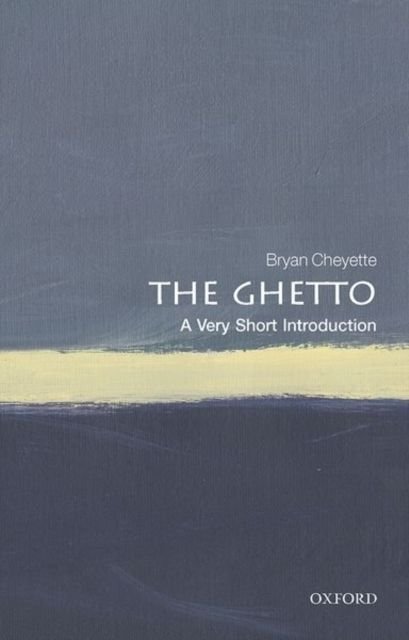The Ghetto: A Very Short Introduction
by Bryan Cheyette
Overview: For three hundred years the ghetto defined Jewish culture in the late medieval and early modern period in Western Europe. In the nineteenth-century it was a free-floating concept which travelled to Eastern Europe and the United States. Eastern European “ghettos”, which enabled genocide, were crudely rehabilitated by the Nazis during World War Two as if they were part of a benign medieval tradition. In the United States, the word ghetto was routinely applied to endemic black ghettoization which has lasted from 1920 until the present. Outside of America “the ghetto” has been universalized as the incarnation of class difference, or colonialism, or apartheid, and has been applied to segregated cities and countries throughout the world.
In this Very Short Introduction Bryan Cheyette unpicks the extraordinarily complex layers of contrasting meanings that have accrued over five hundred years to ghettos, considering their different settings across the globe. He considers core questions of why and when urban, racial, and colonial ghettos have appeared, and who they contain. Exploring their various identities, he shows how different ghettos interrelate, or are contrasted, across time and space, or even in the same place.
ABOUT THE SERIES: The Very Short Introductions series from Oxford University Press contains hundreds of titles in almost every subject area. These pocket-sized books are the perfect way to get ahead in a new subject quickly. Our expert authors combine facts, analysis, perspective, new ideas, and enthusiasm to make interesting and challenging topics highly readable.
Genre: Non-Fiction > Educational
The Sun: A Very Short Introduction by Philip Judge
Overview: The Sun, as our nearest star, is of enormous importance for life on Earth – providing the warm radiation and light which allowed complex life to evolve. The Sun plays a key role in influencing our climate, whilst solar storms and high-energy events can threaten our communication infrastructure and satellites.
This Very Short Introduction explores what we know about the Sun, its physics, its structure, origins, and future evolution. Philip Judge explains some of the remaining puzzles about the Sun that still confound us, using elementary physics, and mathematical concepts. Why does the Sun form spots? Why does it flare? As he shows, these and other nagging difficulties relate to the Sun’s continually variable magnetism, which converts an otherwise dull star into a machine for flooding interplanetary space with variable radiation, high-energy particles and magnetic ejections. Throughout, Judge highlights the many reasons that the Sun is important, and why scientists engage in solar research.
 1 / 2
1 / 2 2 / 2
2 / 2